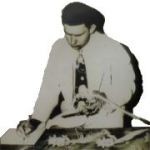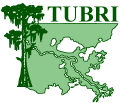The Royal D. Suttkus Field Notes Project
Below is an alphabetical list of surnames, extracted from our database, of individuals who made collections with Royal D. Suttkus which were deposited in the R.D. Suttkus Fish Collection. Each surname is listed alone and (in expanded view) in all of the variations that the surname appears in our database (i.e., accompanying initials and punctuation). Click on “Print View” to view a more complete description of the collection event, which should help you to determine if the collector named is indeed you. Once you have identified all of the collections that you assisted with, please either scan or photocopy your notes and send them to us by email (ldomino@tulane.edu) or regular mail: Tulane University Biodiversity Research Institute, Attn: RDS Field Notes Project, 3705 Main Street, Belle Chasse, LA 70037. Please help us to spread the word about this project to others whose names you recognize in this list. Many thanks in advance!


